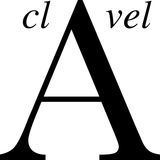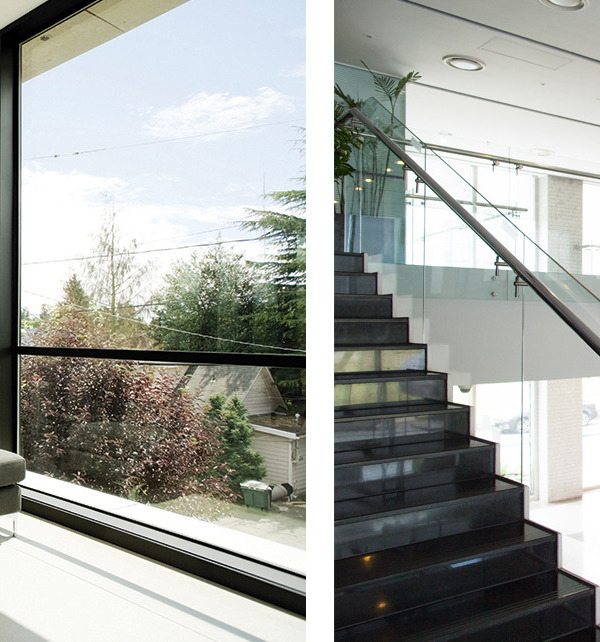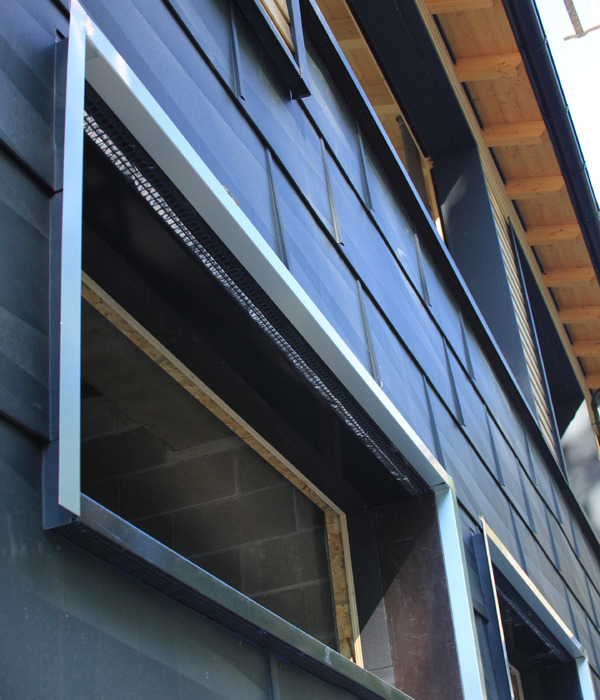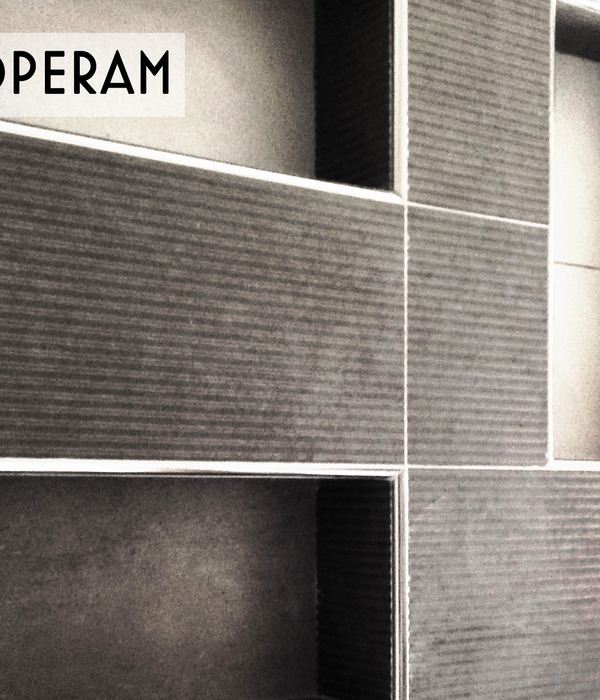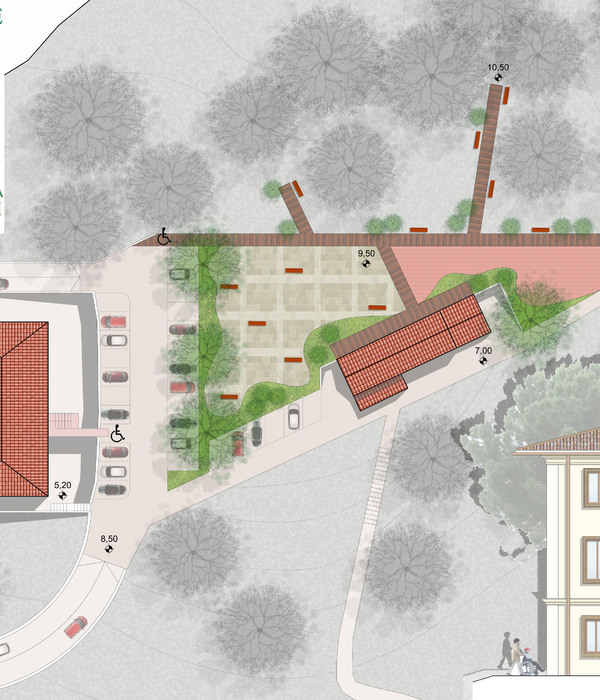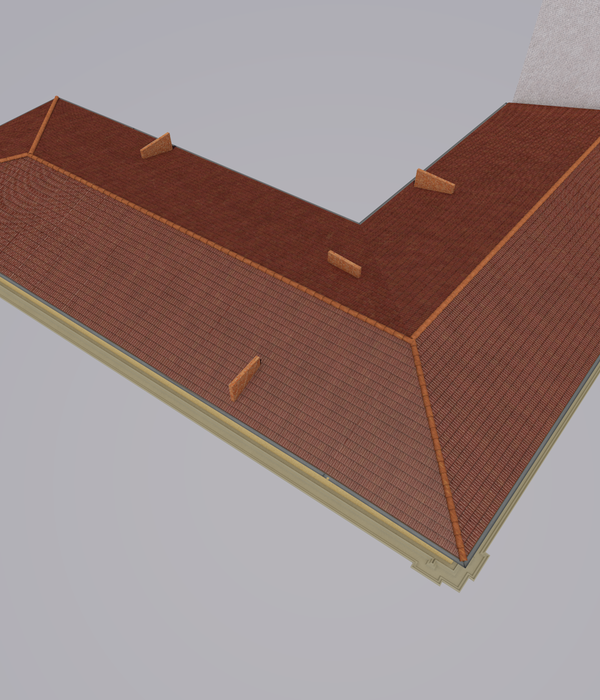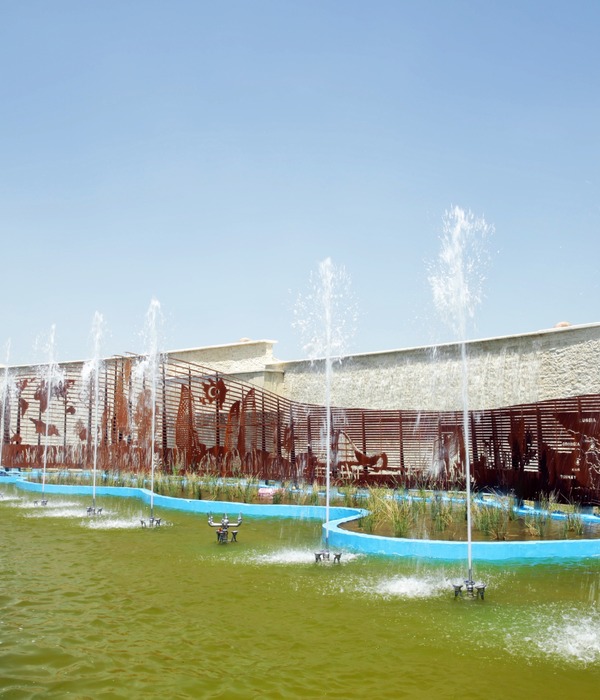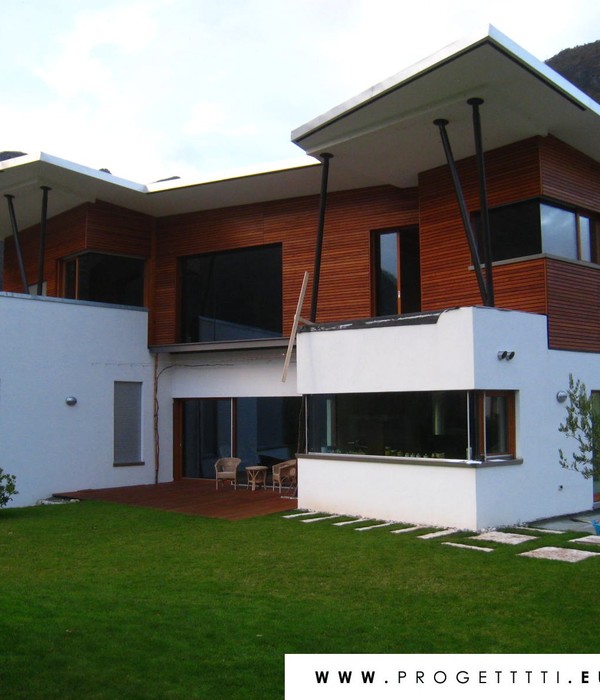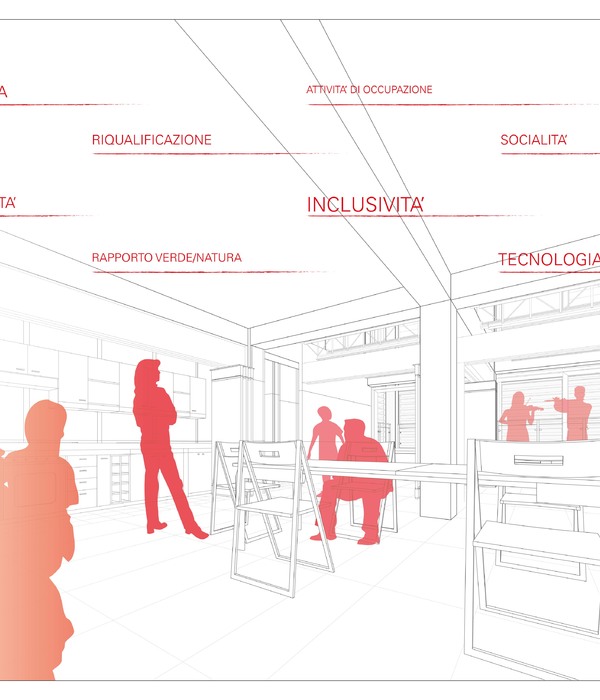新柏林宫——古今交融的文化中心
柏林宫的前身是勃兰登堡王公的居所,建造于1443年,在18世纪初期被部分改造为巴洛克式的宫殿。第二次世界大战期间,柏林宫遭到轰炸,并于1950年被德意志民主共和国认定为普鲁士军国主义的象征而夷为平地。
新建的柏林宫成为了洪堡论坛博物馆中心的所在地,它将重建的旧建筑与现代的新建筑结合起来,使二者形成互补的关系。与此同时,柏林宫也成为了洪堡论坛文化中心乃至整个柏林中心城区的重要标志。
The former Berlin Palace (Berliner Schloss), constructed since 1443 as the residence of the Brandenburg princes, was partially transformed at the beginning of the 18th century into the baroque palace of those same sovereigns, who in 1701 became kings of Prussia and in 1871 also German emperors. Damaged by the Second World War II bombing, the Berlin Palace was lastly razed to the ground for ideological reasons – as a symbol of Prussian militarism – in 1950 by the holders of political power of the GDR.
The new Berlin Palace for the Humboldt Forum museum Centre is the result of a combination of reconstructed Old and modern New, which complement each other. At the same time, it is the key figure of the Berlin’s City Centre, the cultural centre Humboldt Forum and a urban quarter in the heart of Berlin.
▼朝向施普雷河的新立面和重建后的北立面,View of the new façade on the Spree and the rebuilt north façade ©Stefan Müller
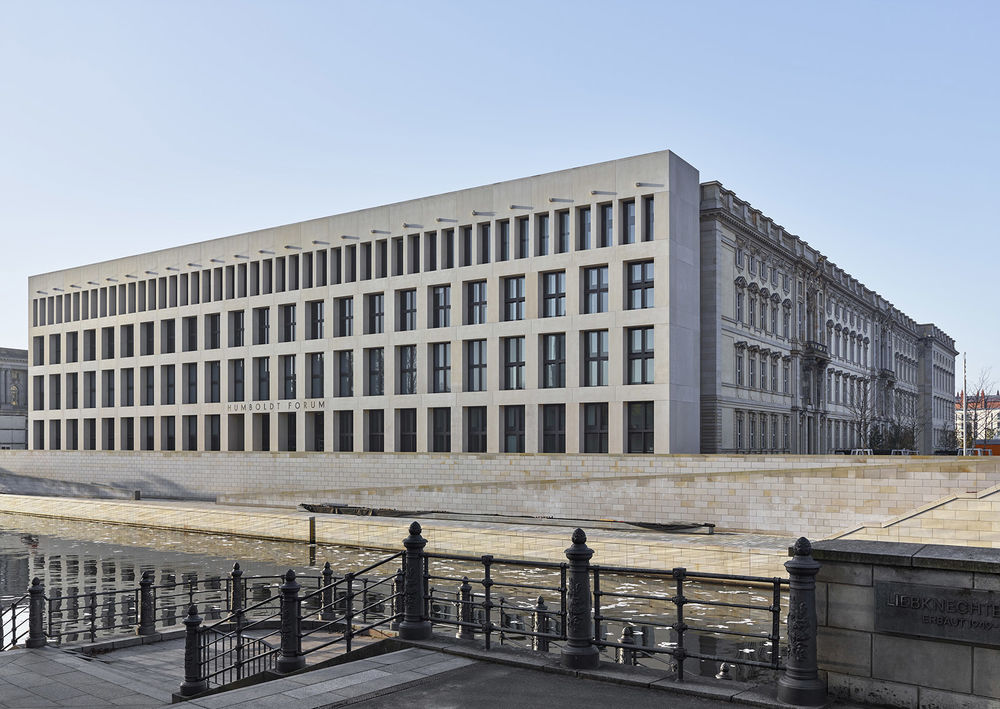
宫殿建筑 The building as a Palace
朝向施普雷河的新建筑被视为整体建筑的“第四翼”,其体积轮廓与Schlüter最初设想但未能实现的方案相同:以文艺复兴和巴洛克式宫殿为范例,将柏林宫改造为一座统一的建筑。外墙的尺寸和架构与既有的三座巴洛克式体量相关联,窗口的大小为外墙赋予了凉廊般的特征——这也反映了建筑所具备的公共特征。
▼剖透视图,Perspective section ©Franco Stella
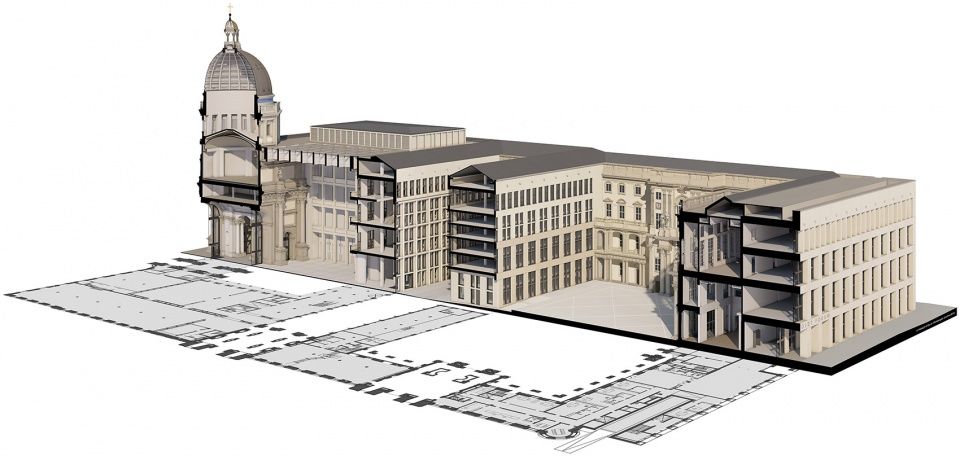
The new building facing the Spree, conceived as the ‘fourth wing’ of the rebuilt building, is inscribed in the volumetric contours of the one designed, and not built, by Schlüter in his original project of transforming the palace into a unitary building, following the example of the Italian Renaissance and Baroque palaces. The size and configuration of its facade are related to those of the three baroque wings. Thanks to the size of its openings (on average six meters high, three wide and over a meter deep), a usual windowed wall becomes a ‘facade of loggias’, which suggests the public character of the building.
▼西侧入口立面和北立面,View of the west portal and of the north facade ©Stefan Müller
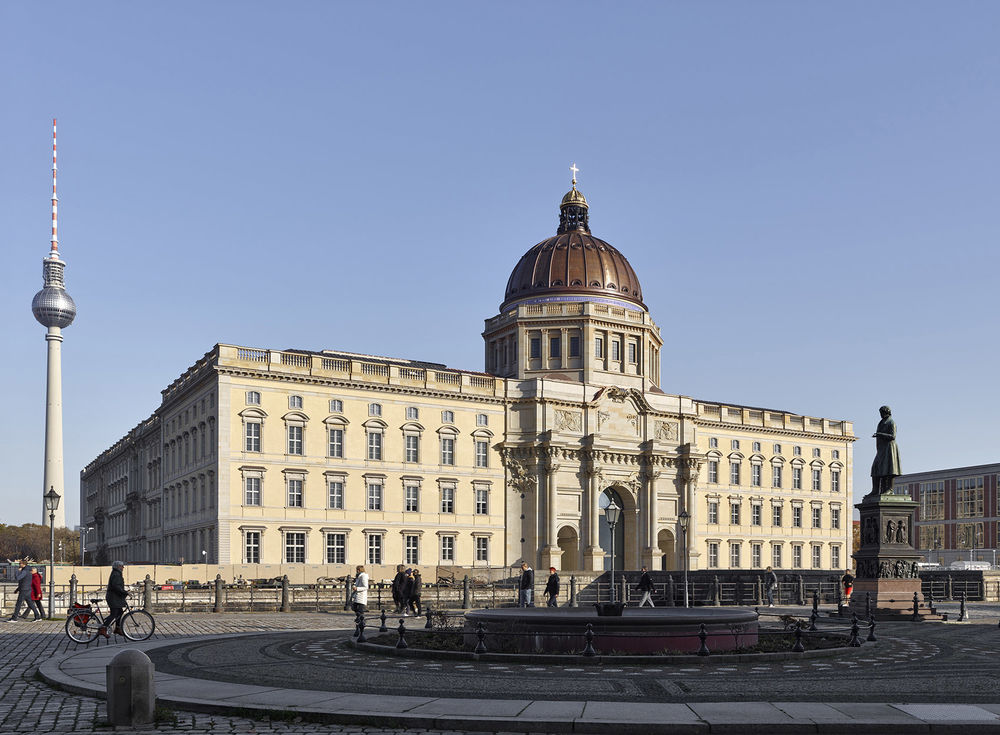
城市的门户 The portal as a City Gate
建筑的5个入口均得到全面重建,其门廊和双层立面分别朝向城市和庭院,使人想起旧时的城门。特别地,得益于两座新庭院与各入口之间的连接关系,宫殿内Eosanderhof庭院的三个入口也得到了重建。在此基础上,朝向施普雷河的新立面中央还增加了第6个入口。
All five portals, which by virtue of their atria and double façade, one towards the city and the other towards the courtyard, remind the City Gate, have been completely rebuilt. In particular, the reconstruction of the three portals of the Eosanderhof was possible thanks to the formation of two new courtyards in relation to the portals. To those rebuilt, a sixth portal was added, in the form of a loggia located in the middle of the new front towards the Spree.
▼朝向施普雷河的新立面和重建后的南立面,View of the new façade on the Spree and the rebuilt south façade ©SHF webcam
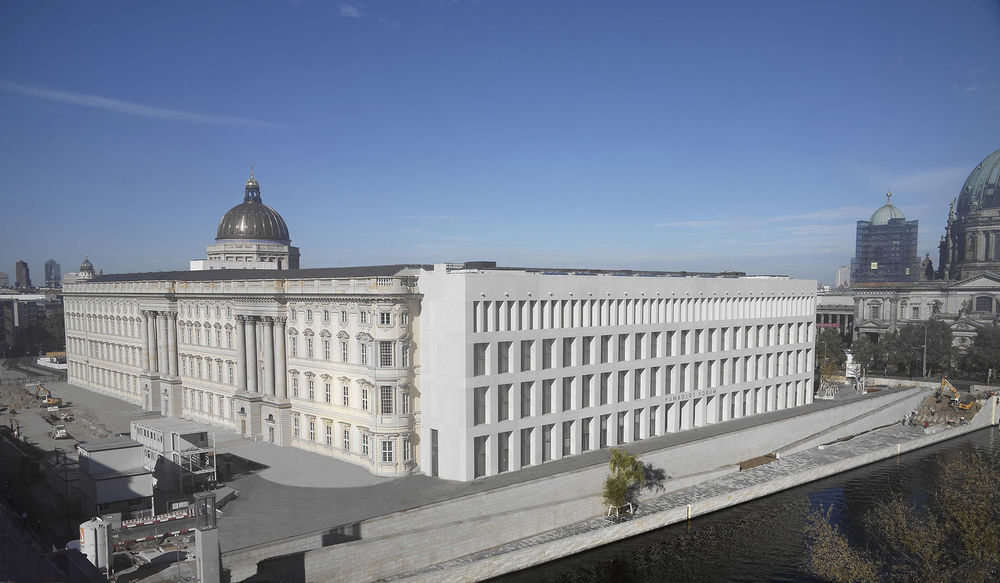
作为剧院广场的庭院 The courtyard as a Theater-Piazza
四座新建筑——包括两座线性建筑和两座“大厅”——与Eosanderhof庭院的入口相结合,定义出两座新的庭院,其中一个是开放式的,另外一个带有屋顶,使宫殿的庭院空间得到了完善。旧庭院的重建和新庭院的增加均以“广场和剧院”的概念为灵感。
Four new buildings- two ‘in line’ and two ‘halls’ – combine with the portals of the Eosanderhof, forming two new courtyards, one open and one covered, and completing the Schlüterhof. The idea of the square and the theater inspired the architecture of the reconstructed and new courtyards.
▼Schlüterhof庭院:围绕着庭院的四个立面中,有三个是重建后的旧立面,一个是新修的立面 Schlüterhof: View of the courtyard with three reconstructed sides and a newly built one ©Stefan Müller
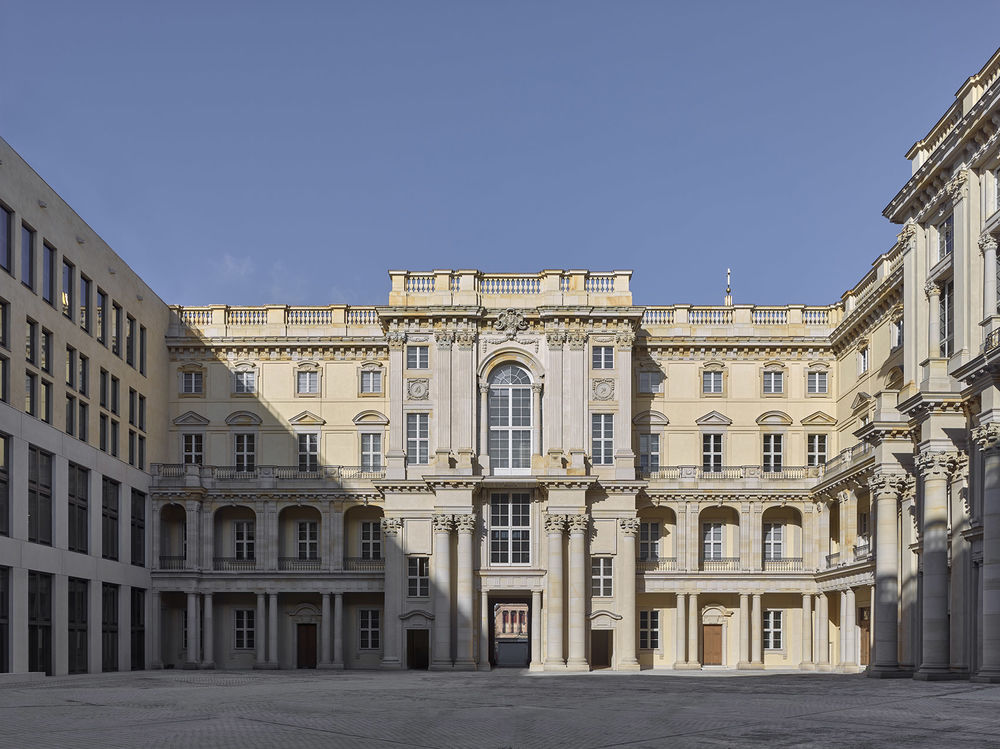
▼Schloss走廊:新建的“柱廊街”贯穿了建筑,介于重建的两个相对的入口之间 ©FS-HUF-PG Archive Schloss-Passage: View of the new ‘colonnaded street’ that crosses the building, between opposing reconstructed portals

内部空间 The internal spaces
根据不同的功能需要,内部空间几乎全部进行了重新设计并置入现代化设施。立柱和横梁被谨慎地布置在空间中,以保证具有特殊历史和艺术价值的场所在未来仍有重建的可能。
Almost all internal spaces have all been redesigned and modernly equipped according to their new purpose; the arrangement of pillars and beams is careful not to undermine the possibility of reconstructing places of particular historical-artistic value in the future.
▼大厅内经过重建的凯旋门和新走廊 ©FS-HUF-PG Archive Great Foyer: View of the reconstructed Triumphal arch -Portal and new galleries
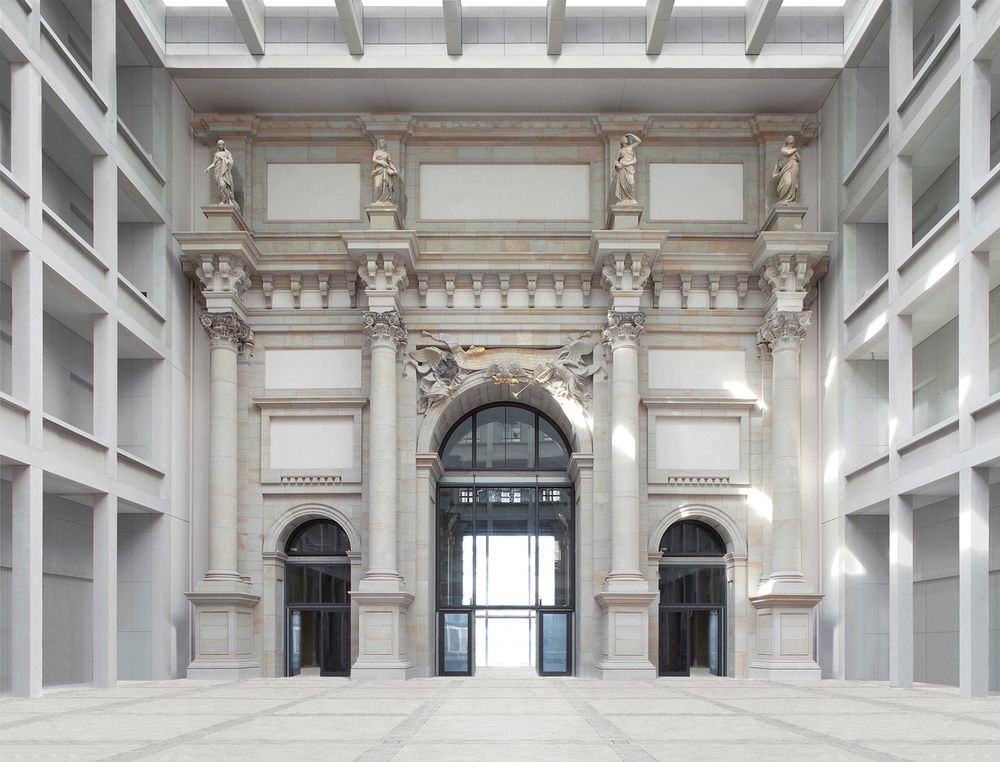
建筑的总面积为42000平方米,共有4个楼层。一层是公共区域,包含入口、楼梯大厅、洪堡大厅、表演和会议空间、临时展亭、雕塑大厅、书店、餐厅和咖啡馆。二层是为柏林博物馆和洪堡大学服务的特殊展览区域;三层和四层是民俗博物馆和亚洲艺术博物馆的展厅、研究室和修复实验室。技术和行政空间主要集中在横向建筑的夹层,两侧可以分别俯瞰到Schloss走廊和Schlüterhof庭院。
The total useful surface, distributed over four floors, is 42.000 sq.m.: on the ground floor, in an area of about 10.000 sq.m.,there are the spaces of the so-called ‘public area’ : the Entrance and Stairs Hall, the Humboldt-Foyer, rooms for shows, meetings and temporary exhibitions, the Sculpture Hall, bookshop, restaurants and cafes; on the first floor are the exhibition spaces of a special Berlin Museum and the Humboldt University; on the second and third floors, the collections of the Ethnological Museum and the Museum of Asian Art, research and restoration laboratories. The spaces for the technical and administrative staff are mostly concentrated in the half-height floors of the transversal building overlooking the Schloss-Passage on one side and the Schlüterhof on the other.
▼雕塑大厅:修缮后的Schlüter的雕塑作品被放置在靠墙的柱子上,与原先它们在户外的位置相一致,View of the Sculpture Hall. The restored statues of Schlüter and his workshop are arranged on columns close to the wall, as in the original outdoor location ©FS-HUFArchive
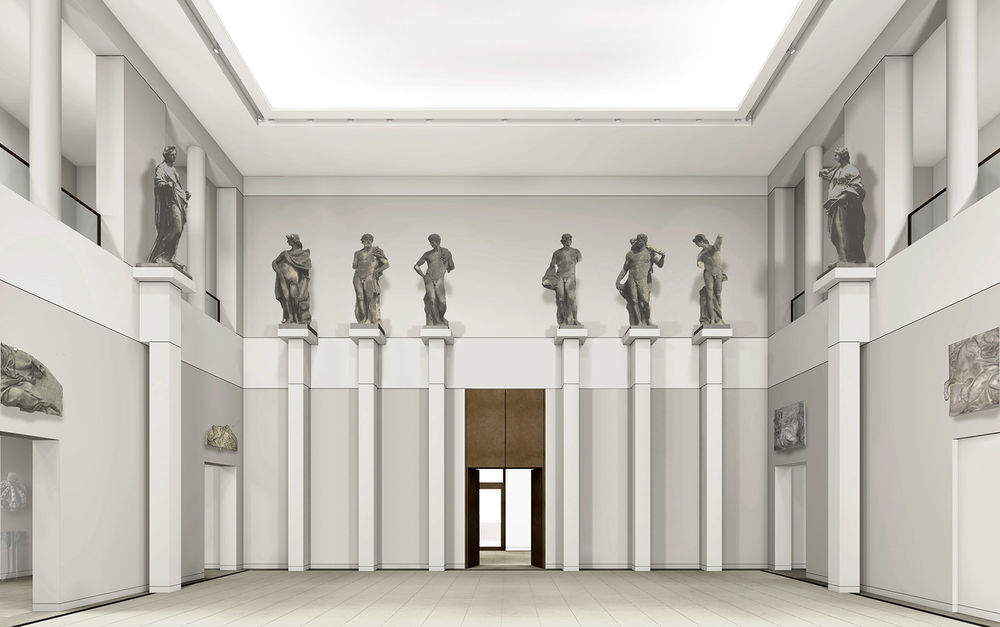
▼楼梯厅:从上方望向对面的电梯 ©Stefan Müller Hall of the stairs: view from above towards the opposite stairs
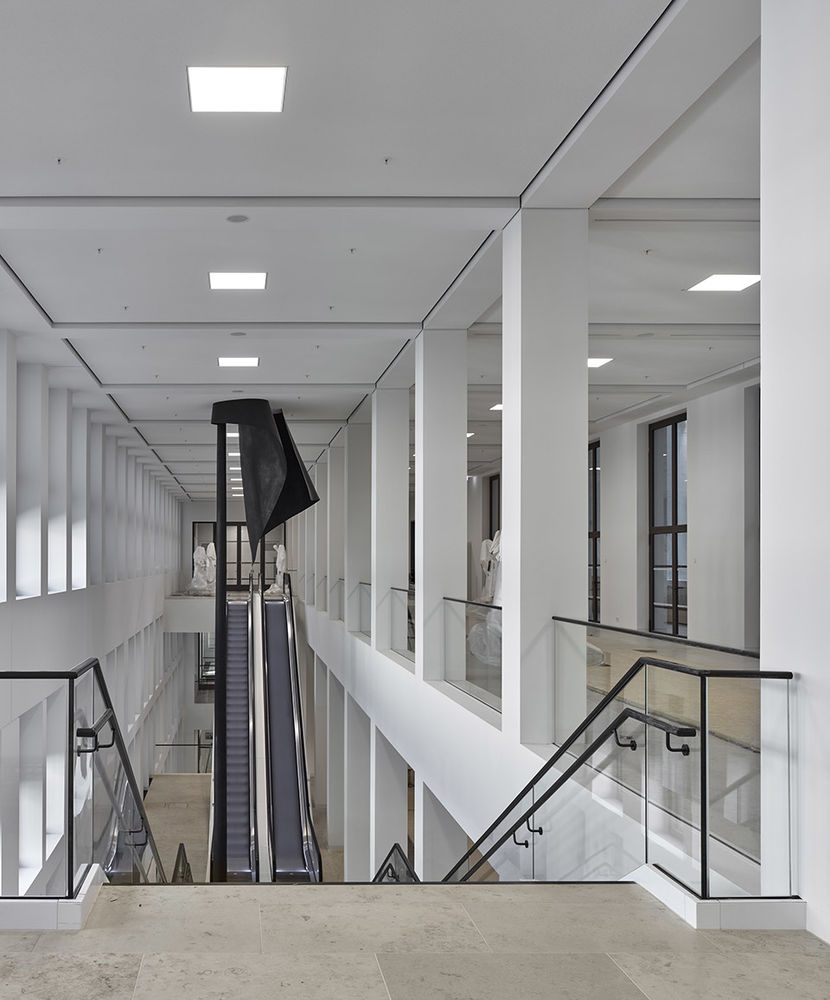
▼体块平面,Volumetric plan ©Franco Stella
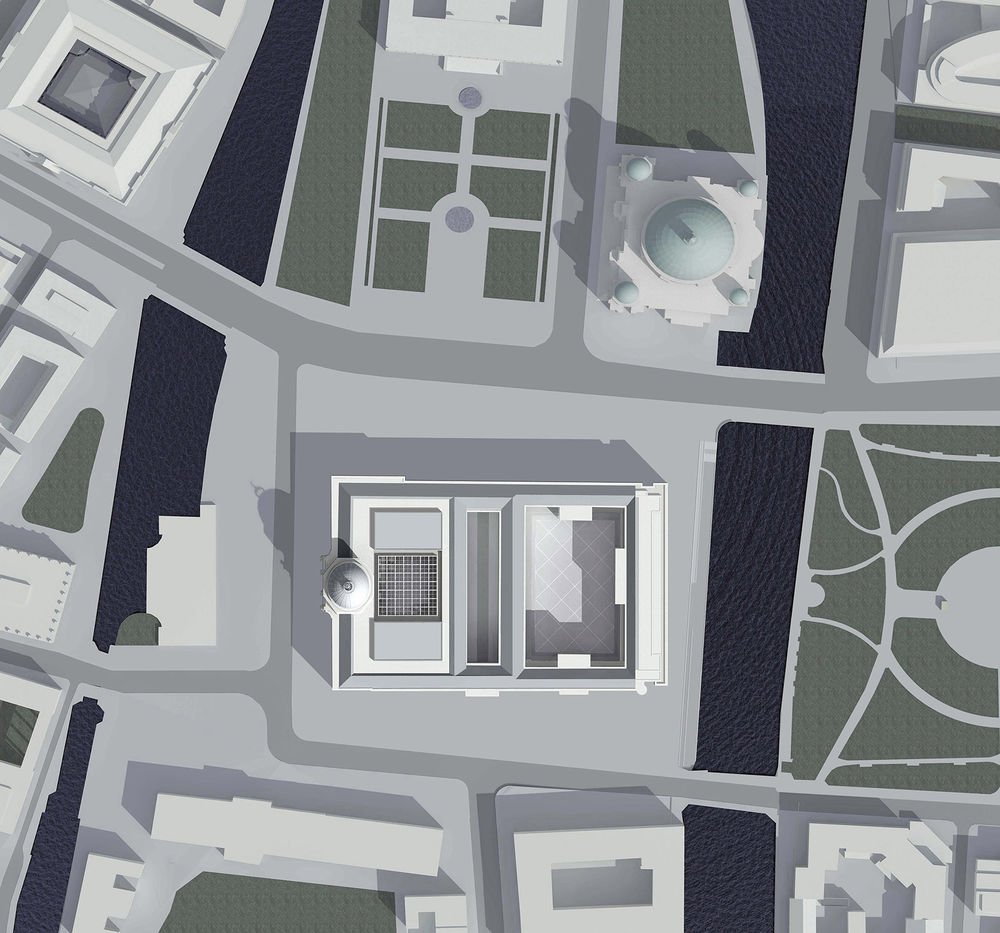
▼首层平面图和四层平面图,Ground floor plan (above) and third floor (below) ©Franco Stella
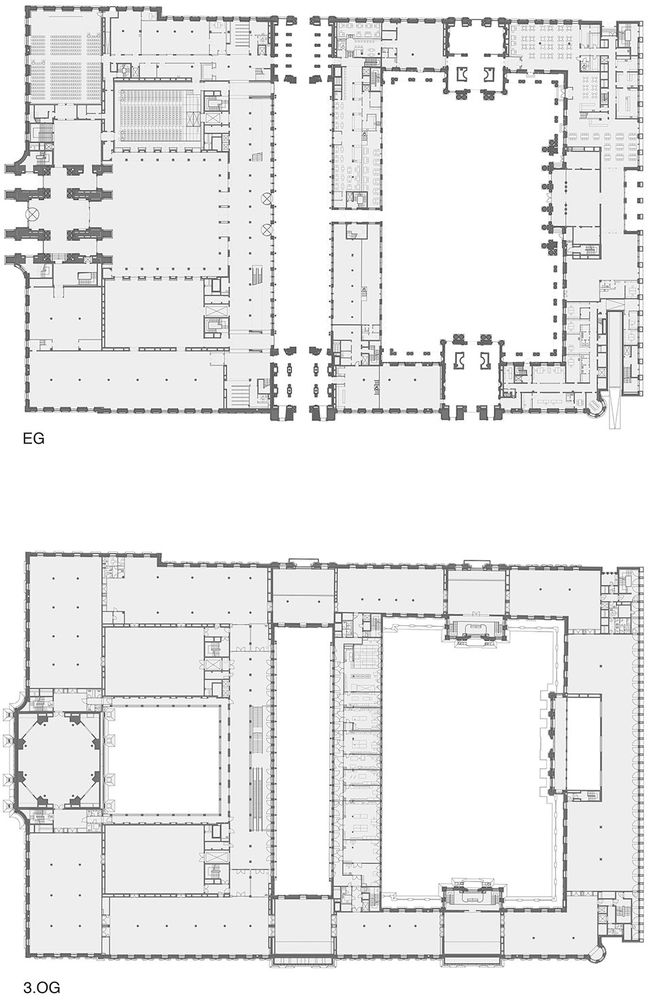
chronology: 2007-08: competition (first prize) 2012: start of construction works 2020, opening to the public of the internal “public spaces” 2021: official opening of the Humboldt Forum
dimensional data: 490.000 m3 volume 98.000 m2 gross area 42.000 m2 useful surface energy consumption 30% below the prescribed threshold costs 677 million euros, of which 105 from private donations

